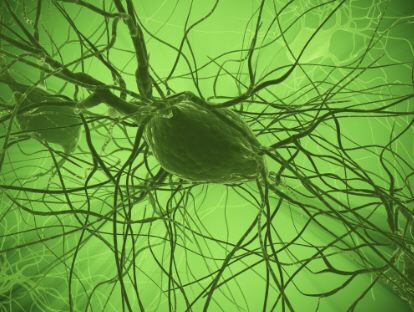We see that in some patients who have central sensitization, treating the peripheral pain generators may results in a decrease or elimination of the widespread pain.
Widespread pain is often addressed with medication. It is common for a patient to be given an anticonvulsant, such as pregabalin (Lyrica) or gabapentin (Neurontin), or a serotonin-norepinephrine reuptake inhibitors (SNRIs), such as duloxetine (Cymbalta) or venlafaxine (Effexor). These drugs affect the neurons transmitting pain-related signals in the central nervous system.
Another possible target in the nervous system is the glial cells. The glia are non-neuronal cells that provide support and protection for the neurons. 90% of the central nervous system (spine and brain) are made up of glial cells.
Two cells types, microglia and astrocytes, recently have been found to play a role in pain processing. These two types of cells are stimulated in response to damaged or dying cells. Astrocytes produce inflammation, while microglia initiate both inflammatory and anti-inflammatory activity. An inflammatory response in the microglia results in pain-producing chemicals, adding to the patient’s overall pain. Chronic pain and opioids, such as morphine and oxycodone, can also stimulate the microglia to produce these same pain-producing chemicals.
This may be one of the reasons why opioids are ineffective in patients with long-standing pain, as with fibromyalgia (FMS). Interestingly, drugs that block opioids, such as naltrexone, in very small doses have been found to be effective in decreasing pain in FMS (http://www.ncbi.nlm.nih.gov/pubmed/23359310). The mechanism appears to be blocking the pain producing effect of the microglia. Since the doses are so small (~4mg/day), the typical blocking of the mu receptor (the receptor that is known to be typically stimulated by opioids) doesn’t occur. What we often find as a result is pain relief and a decreasing need for opioids.
Since microglia also play an anti-inflammatory role, in our search for drugs to affect the microglia, we need to find a balance in which we can maintain their protective anti-inflammatory roles while also reducing their inflammatory pain producing effects. (http://www.nature.com/nrn/journal/v10/n1/abs/nrn2533.html)
Filed under: Fibromyalgia Syndrome (FMS) • opioids • pain management
Like this post? Subscribe to my RSS feed and get loads more!


